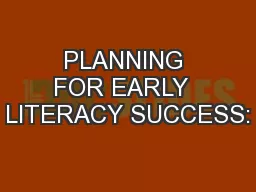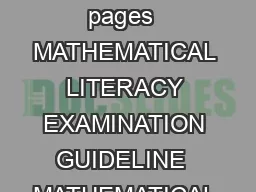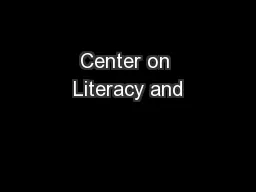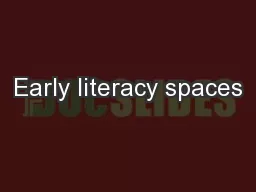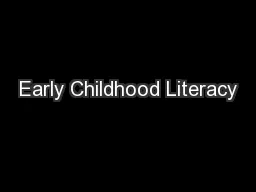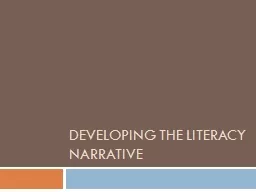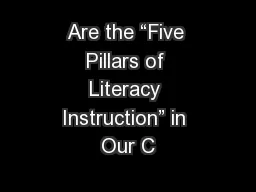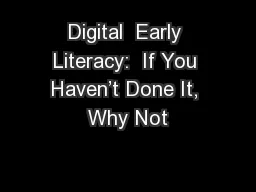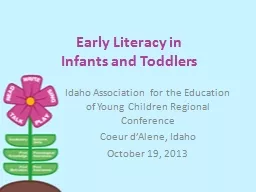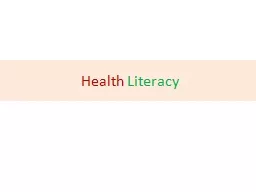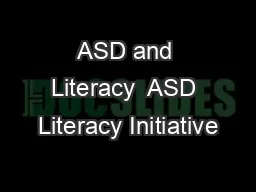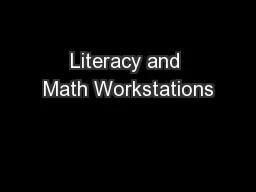PPT-PLANNING FOR EARLY LITERACY SUCCESS:
Author : mitsue-stanley | Published Date : 2018-11-16
Intersections Between WI Model Early Learning Standards and Wisconsin Standards for ELA 1 Presenter Notes GOAL Engage in a process to examine learning expectations
Presentation Embed Code
Download Presentation
Download Presentation The PPT/PDF document "PLANNING FOR EARLY LITERACY SUCCESS:" is the property of its rightful owner. Permission is granted to download and print the materials on this website for personal, non-commercial use only, and to display it on your personal computer provided you do not modify the materials and that you retain all copyright notices contained in the materials. By downloading content from our website, you accept the terms of this agreement.
PLANNING FOR EARLY LITERACY SUCCESS:: Transcript
Download Rules Of Document
"PLANNING FOR EARLY LITERACY SUCCESS:"The content belongs to its owner. You may download and print it for personal use, without modification, and keep all copyright notices. By downloading, you agree to these terms.
Related Documents

